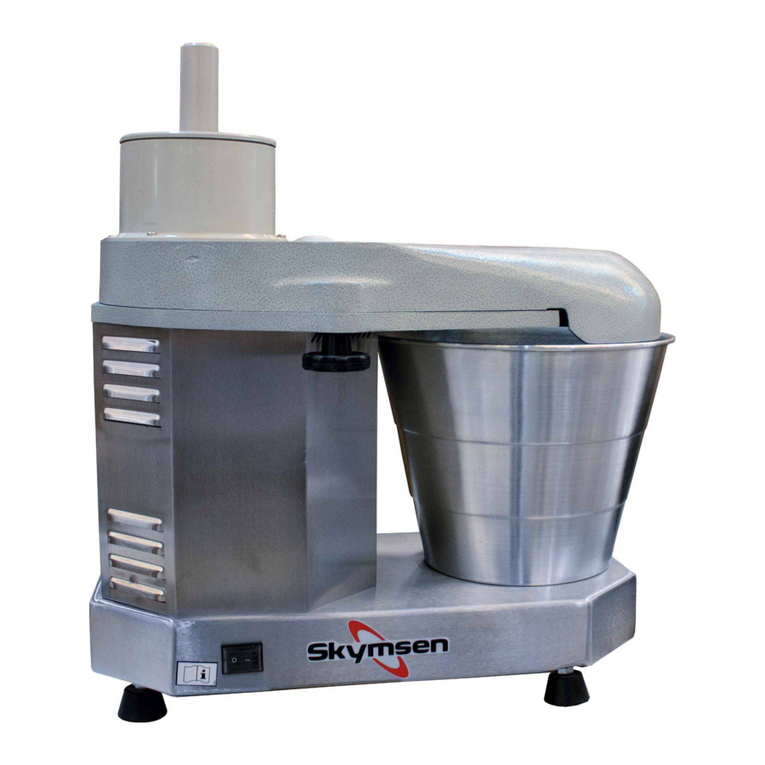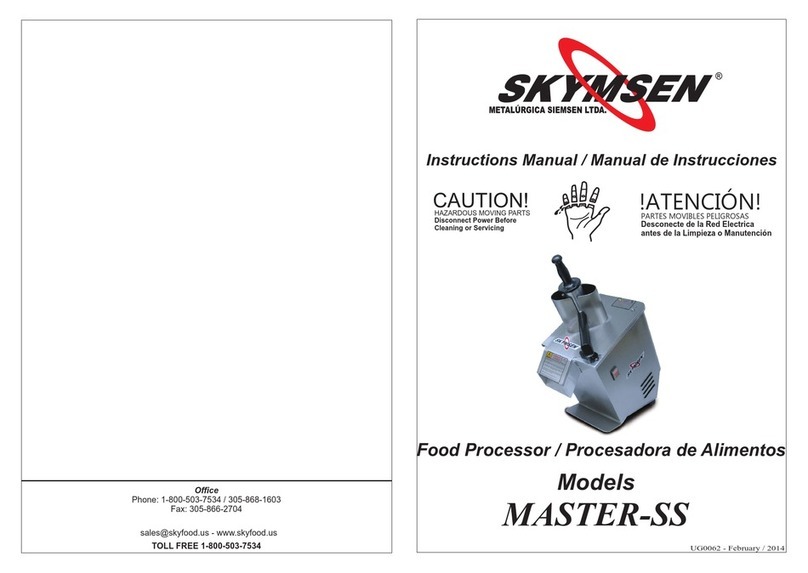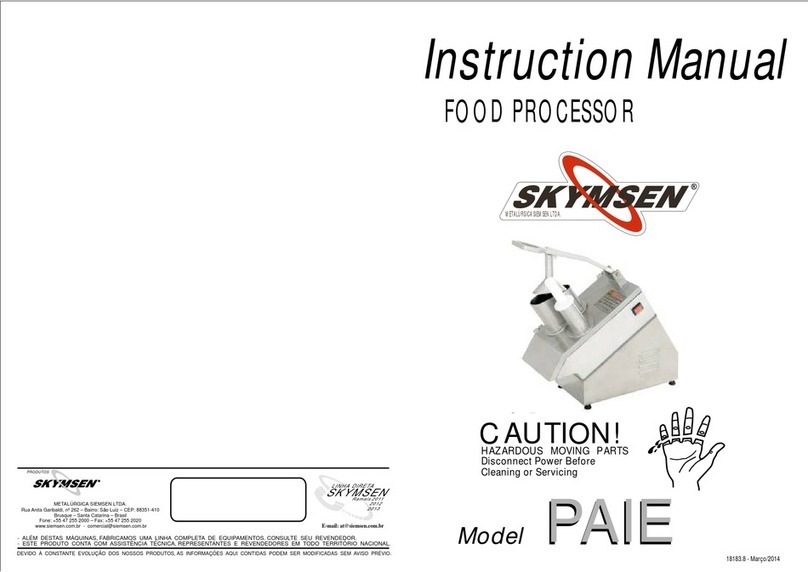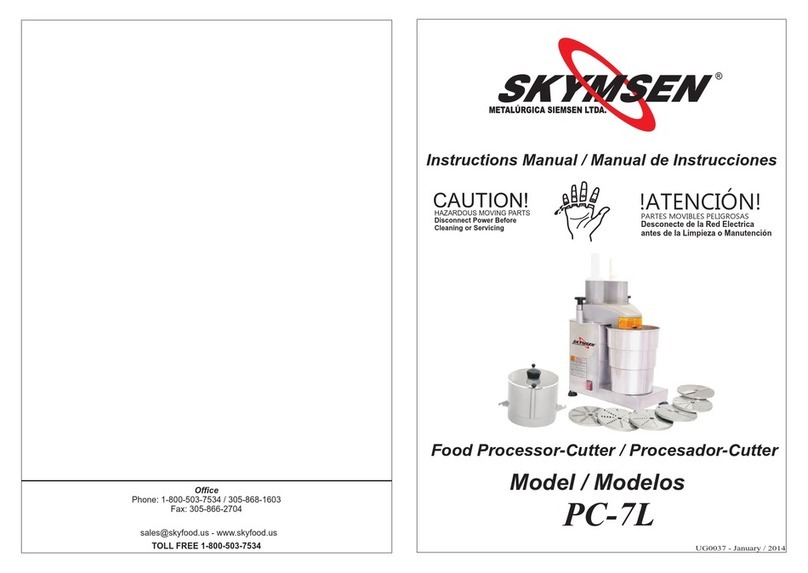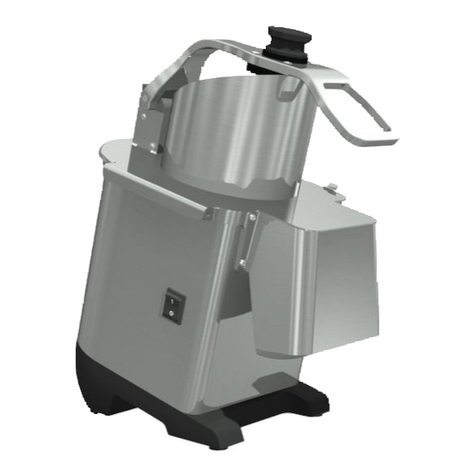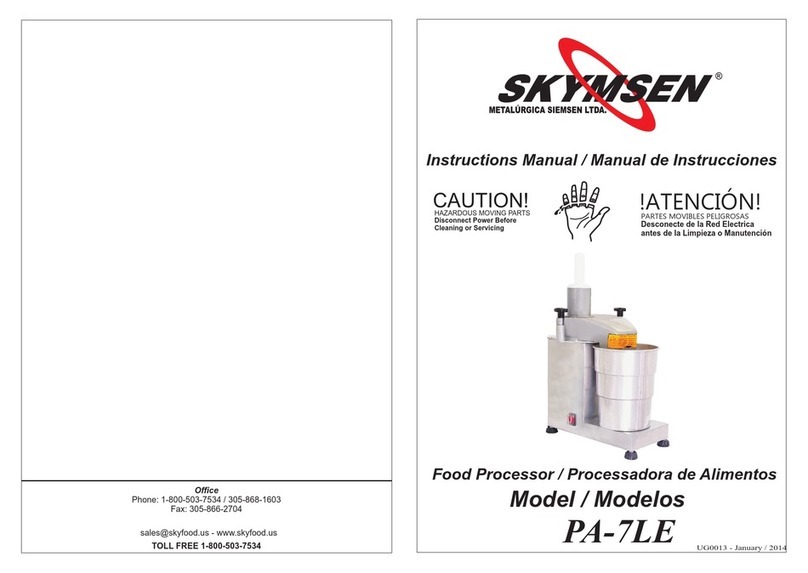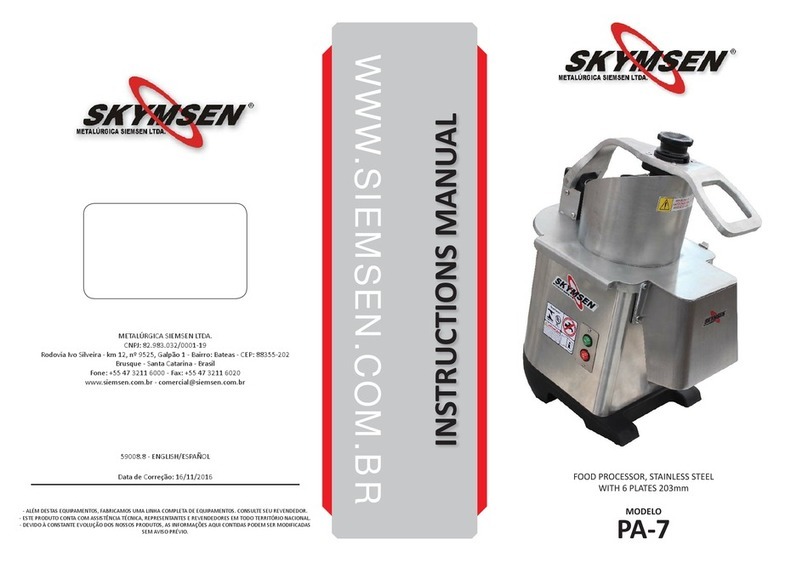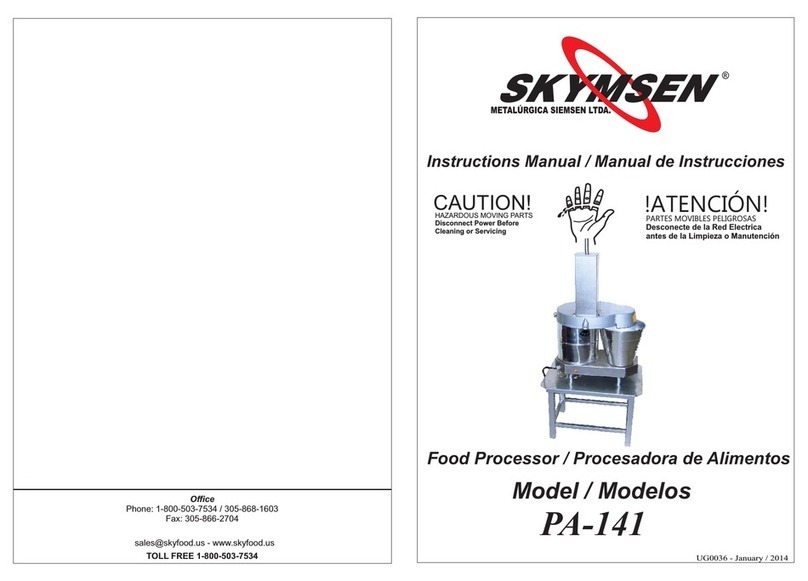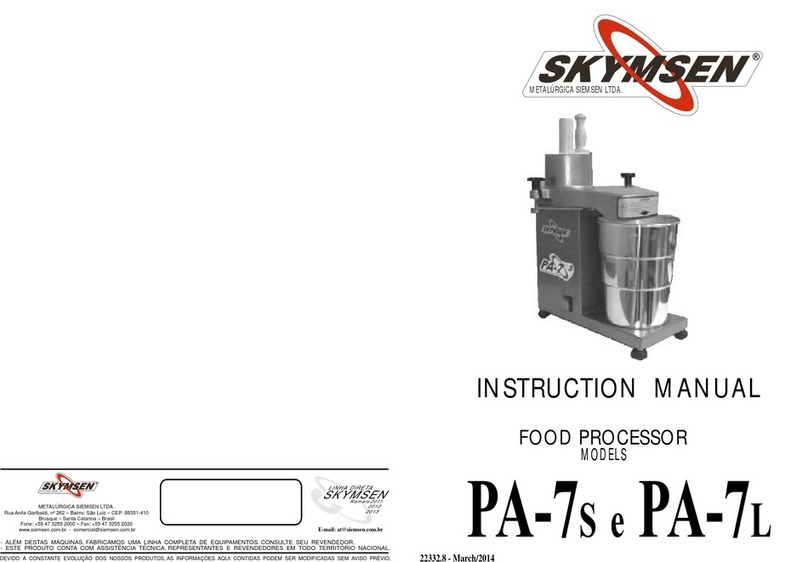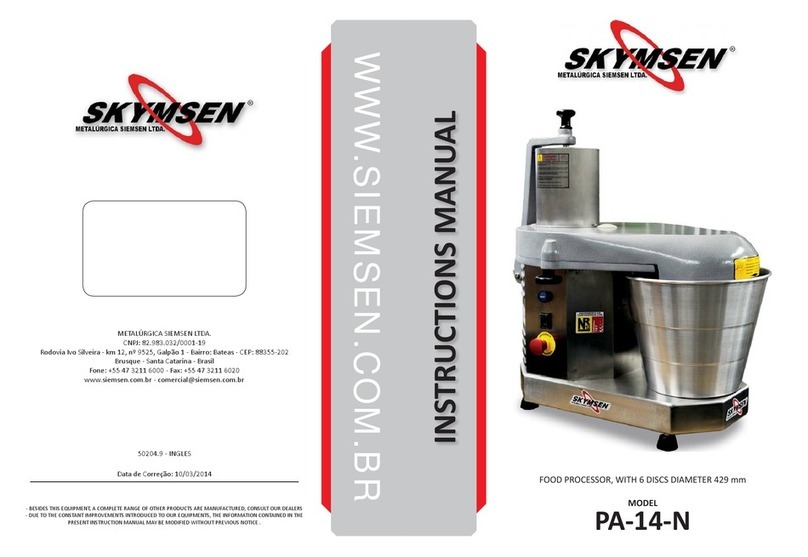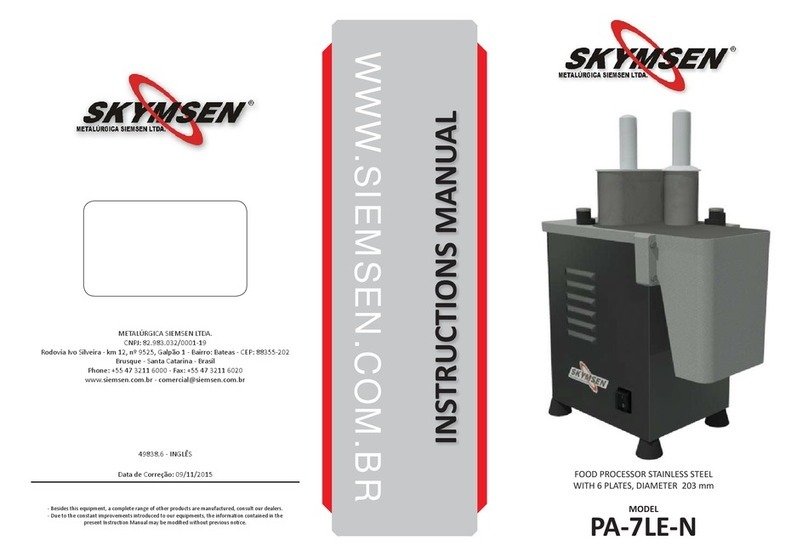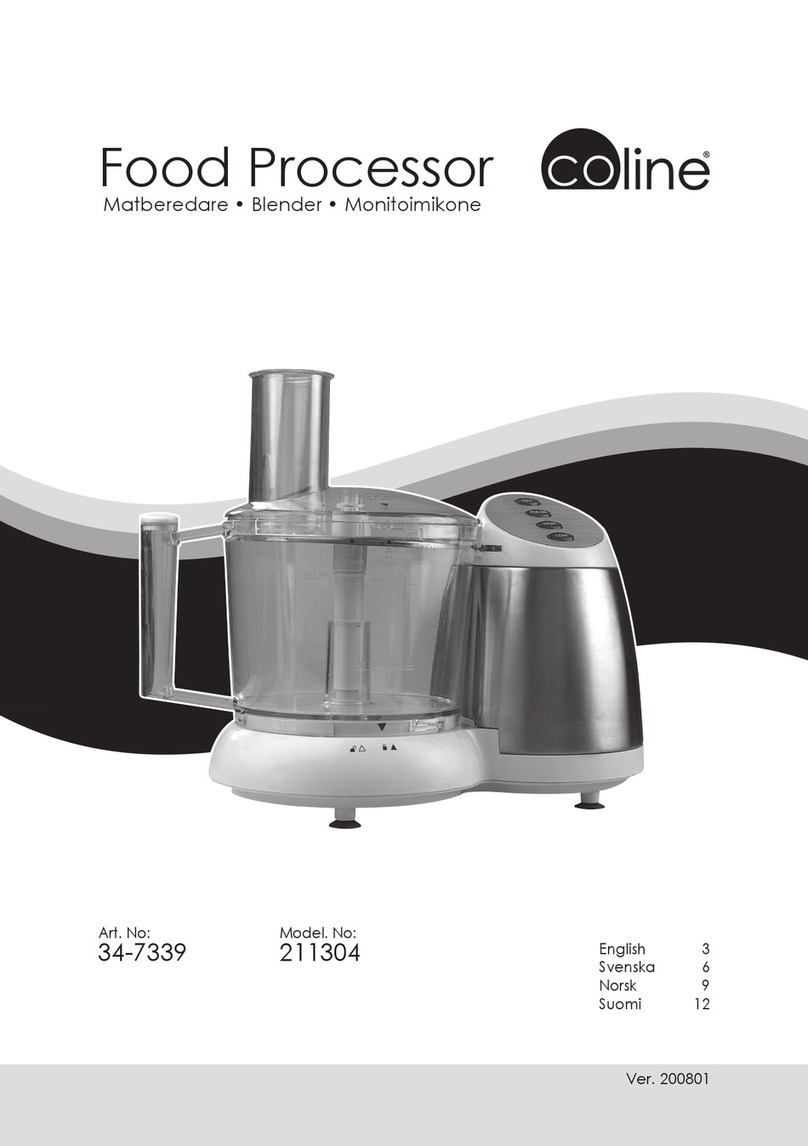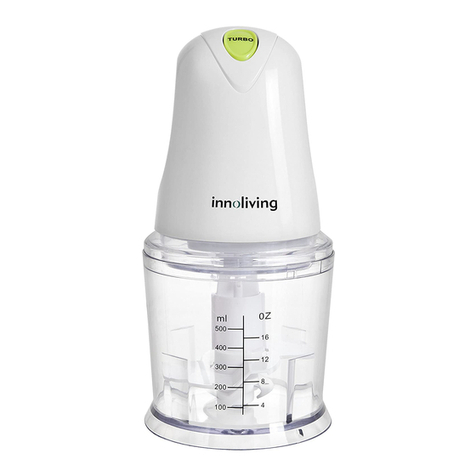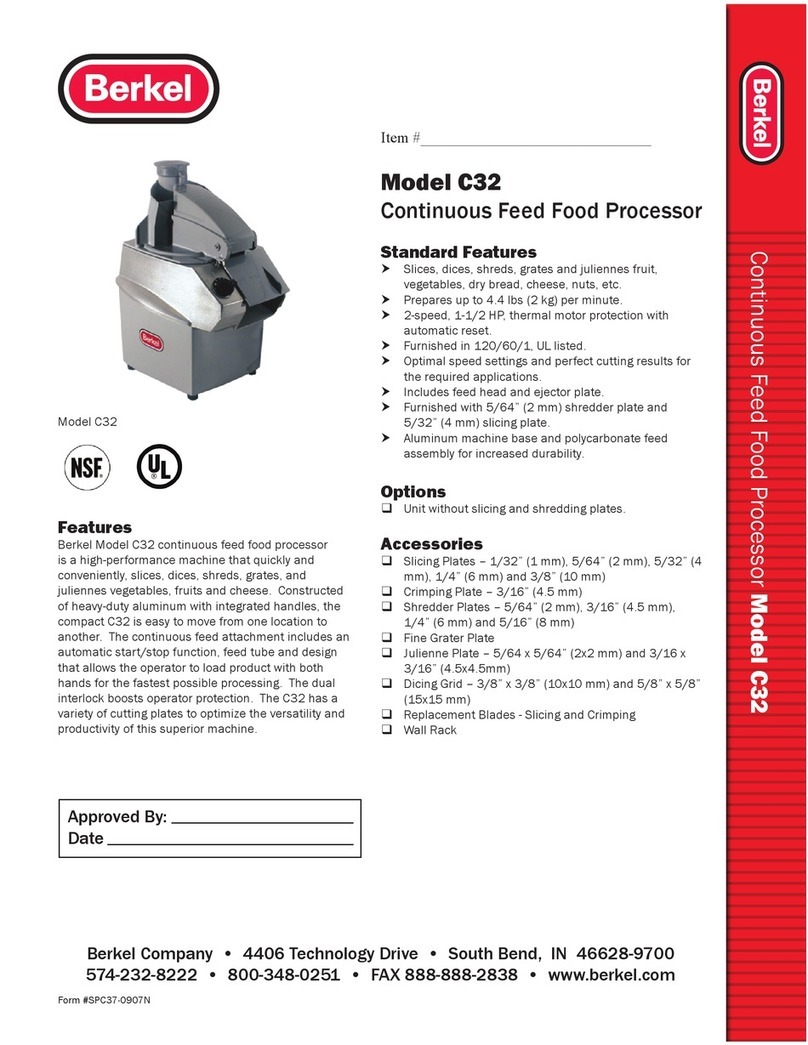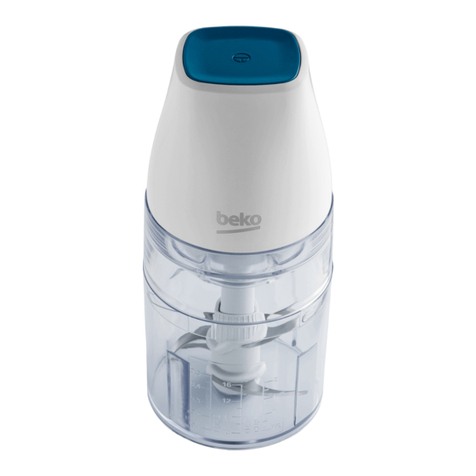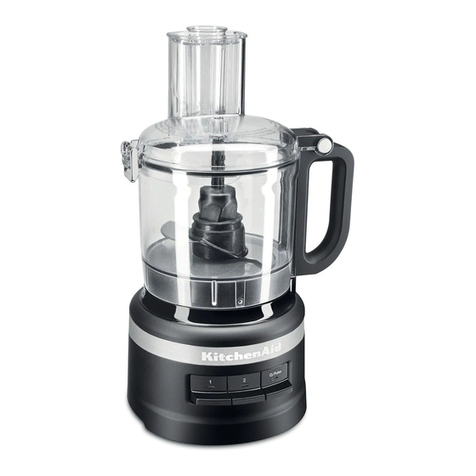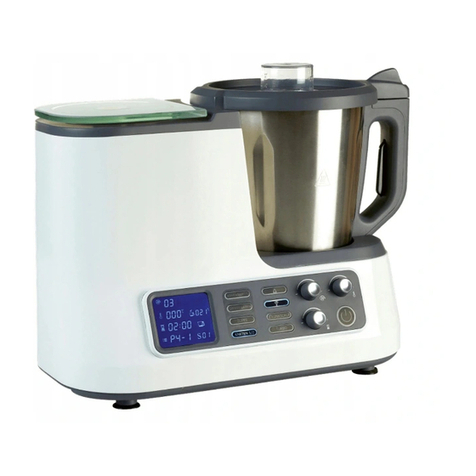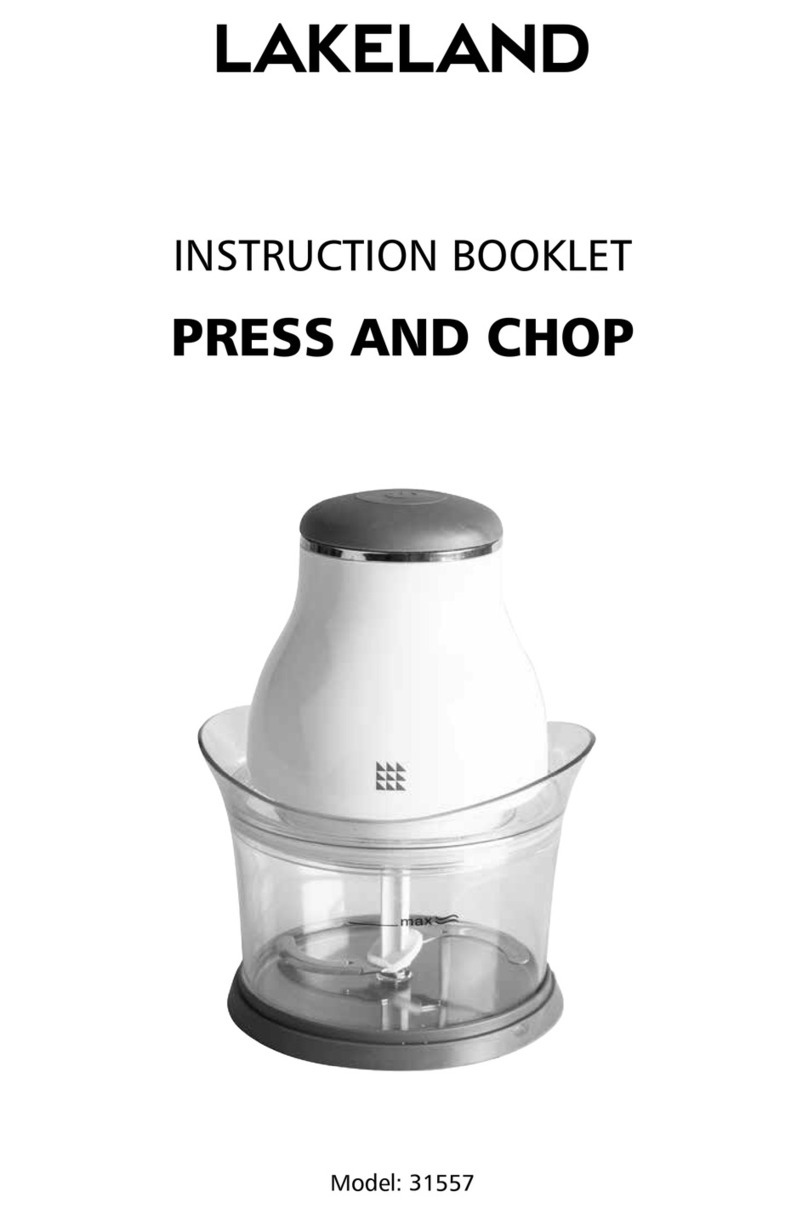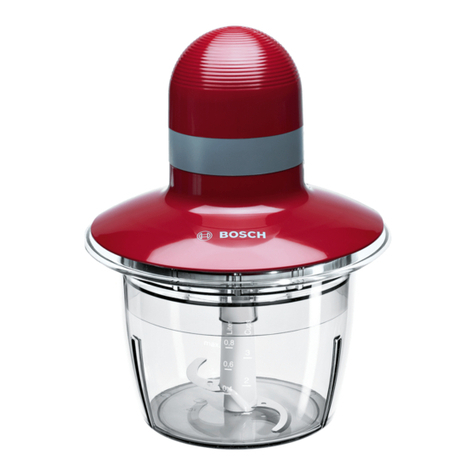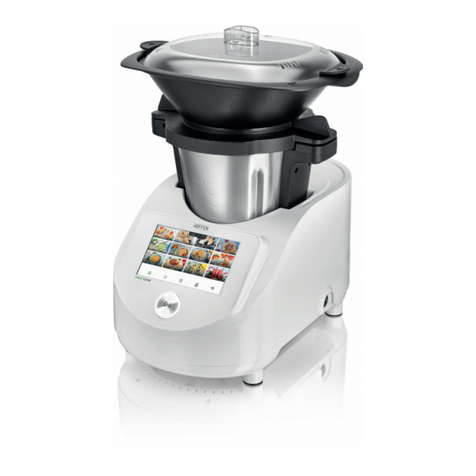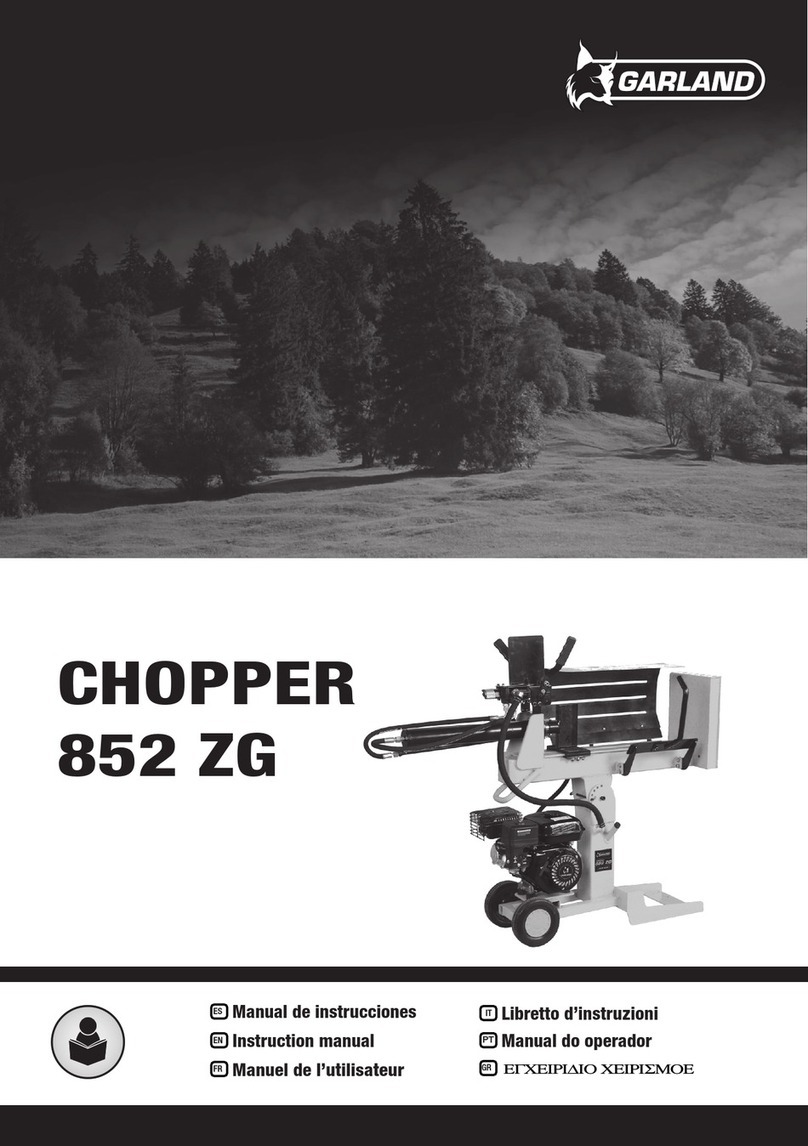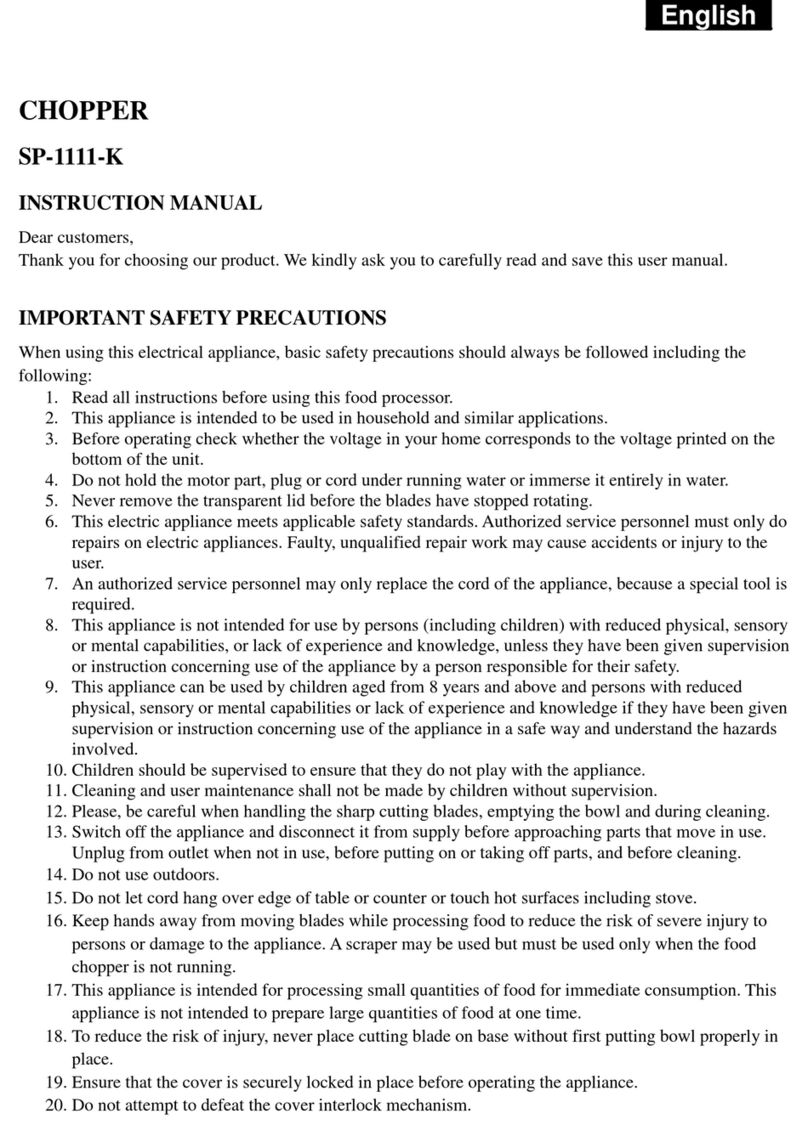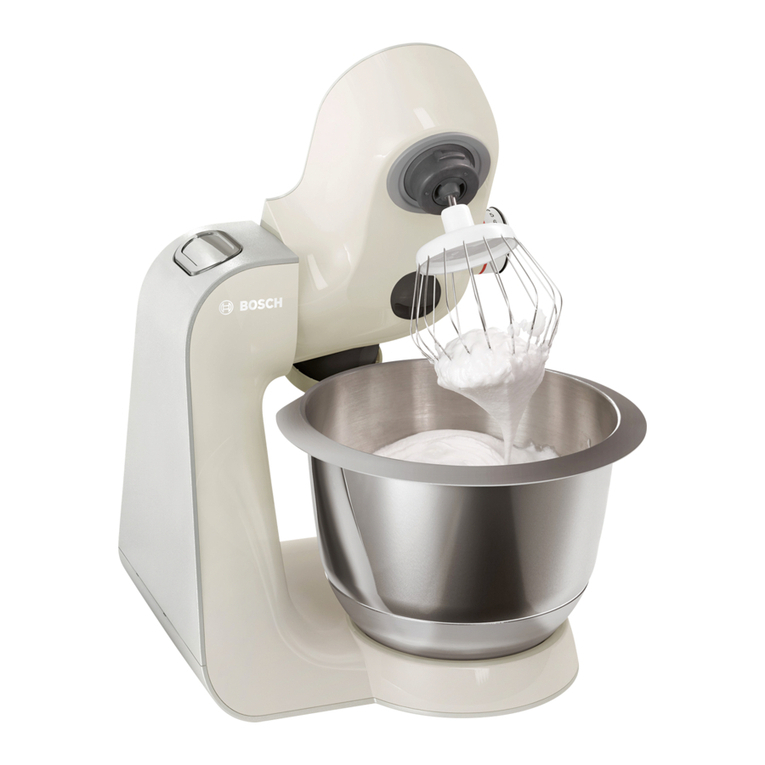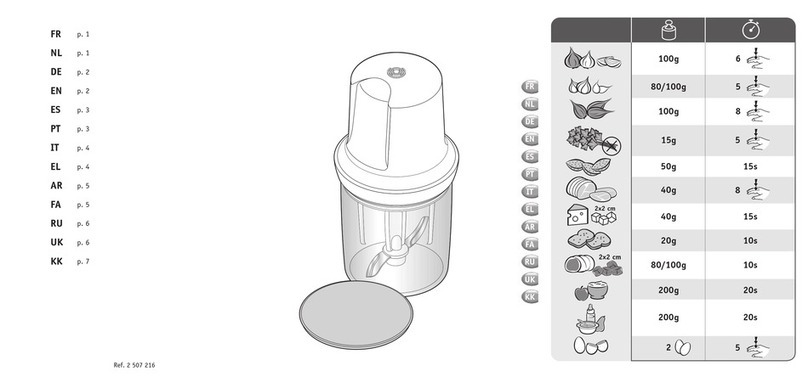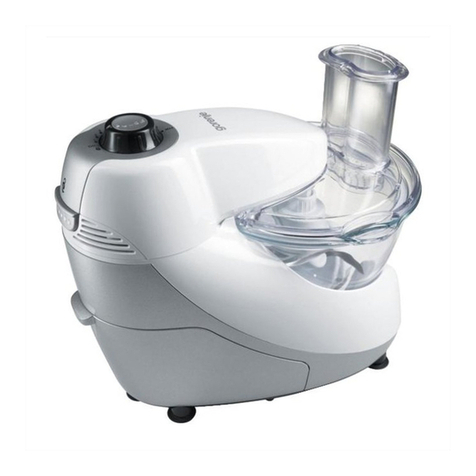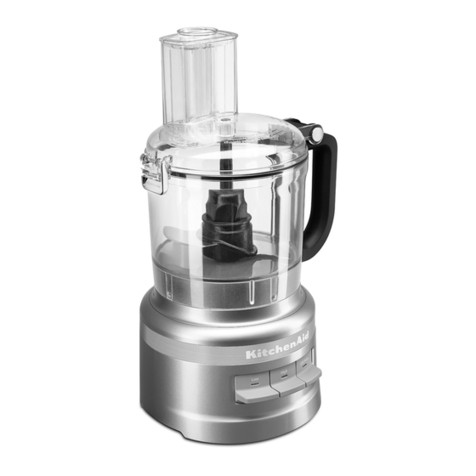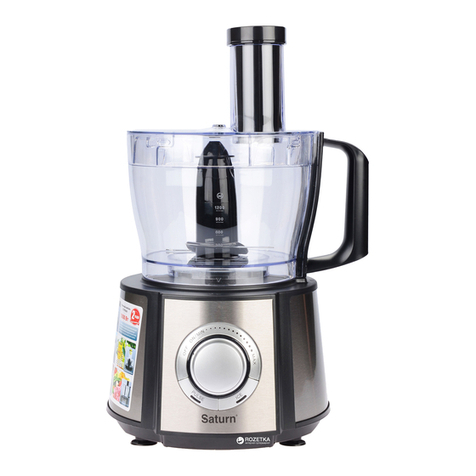8
09
3.4.1Cautions with Stainless Steel:
The Stainless Steel may present rust signs, which ARE ALWAYS CAUSED
BY EXTERNAL AGENTS, especially when the cleaning or sanitization is not
constant and appropriate.
The Stainless Steel resistance towards corrosion is mainly due to the
presence of chrome, which in contact with oxygen allows the formation of a very
thin protective coat. This protective coat is formed through the whole surface of the
steel, blocking the action of external corrosive agents.
When the protective coat is broken, the corrosion process begins,
being possible to avoid it by means of constant and adequate cleaning.
Cleaning must always be done immediately after using the
equipment. For such end, use water, neutral soap or detergent, and clean the
equipment with a soft cloth or a nylon sponge. Then rinse it with plain running
water, and dry immediately with a soft cloth, this way avoiding humidity on surfaces
and especially on gaps.
The rinsing and drying processes are extremely important to prevent
stains and corrosion from arising.
IMPORTANT
Acid solutions, salty solutions, disinfectants and some sterilizing
solutions ( s, tetravalent ammonia salts, iodine compounds,
nitric acid and others), must be AVOIDED, once it cannot remain for
long in contact with the stainless steel:
These substances attack the stainless steel due to the CHLORINE on
its composition, causing corrosion spots (pitting).
Even detergents used in domestic cleaning must not remain in
contact with the stainless steel longer than the necessary, being mandatory to
remove it with plain water and then dry the surface completely.
Use of abrasives:
Sponges or steel wool and carbon steel brushes, besides scratching
the surface and compromising the stainless steel protection, leave particles that rust
and react contaminating the stainless steel. That is why such products must not be
used for cleaning and sanitization. Scrapings made with sharp instruments or
similar must also be avoided.
Main substances that cause stainless steel corrosion:
Dust, grease, acid solutions such as vinegar, fruit juices, etc., saltern
solutions (brine), blood, detergents (except for the neutral ones), common steel
particles, residue of sponges or common steel wool, and also other abrasives.
hypochlorite
4. General Safety Practices
The following safety instructions are addressed to both the operator
of the machine as well as the person in charge of maintenance. The
machine has to be delivered to the operator in perfect conditions of use by
the Distributor to the user. The user shall operate the machine only after
being well acquainted with the safety procedures described in the present
manual. READ THIS MANUAL WITHATTENTION.
4.1 Basic Operation Practices
4.1.1 Dangerous parts
Some parts of the electric devices are connected to high voltage
points. These parts when touched may cause severe electrical shocks or
even be FATAL.
Never touch commands such as buttons, switches and knobs with
wet hands, wet clothes and/or shoes. By not following these instructions
operator could be exposed to severe electrical shocks or even to a FATAL
situation.
4.1.2 Warnings
The operator has to be well familiar with the position of ON/OFF
Switch to make sure the Switch is easy to be reached when necessary.
Before any kind of maintenance, physically remove plug from the socket.
Provide space for a comfortable operation thus avoiding accidents.
Water or oil spilled on the floor will turn it slippery and dangerous. Make
sure the floor is clean and dry.
Before giving any manual command (switch, buttons, turn keys or
lever) be sure the command is the correct one. Check this manual for
further details if necessary.
Never use a manual command (switch, buttons, lever) unadvisedly.
If any work is to be made by two or more persons, coordination signs will
have to be given for each operation step. Every step of the operation shall
be taken only if the sign has been made and responded.
IMPORTANT
If any item from the GENERAL SAFETY NOTIONS section is not
applicable to your product, please disregard it.
